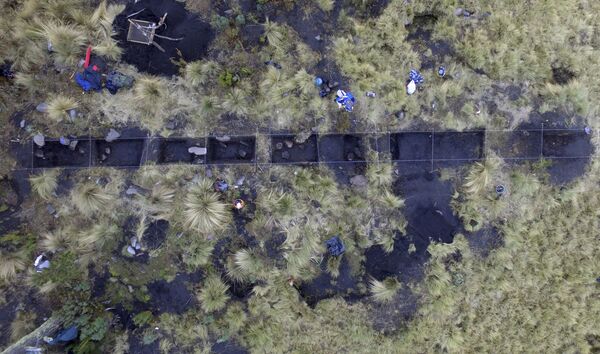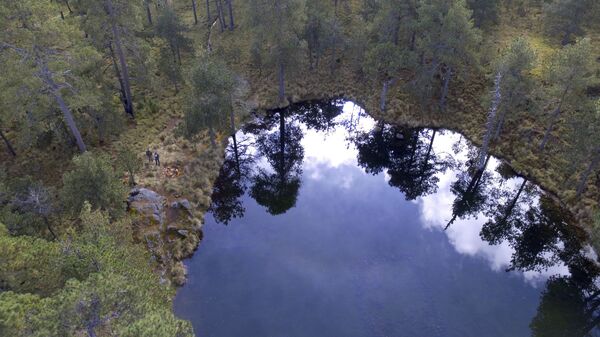According to researchers from the National Institute of Anthropology and History, the stones found near the Iztaccihuati volcano seemed to float on the surface of the water and were allegedly designed as a miniature model of the universe. In the Aztec creation myth, everything on the earth was created by four gods, who also created a sea monster called Cipactli. As they continued to create things, Cipactli, who floats on the primitive waters, destroys all their work. Thus the gods had to kill her and create the world from her body.
READ MORE: 11,500-Year-Old Baby May Unlock Secret of Human Migration to N America
Furthermore, the archaeologists found decorative pieces associated with the rain god Tlaloc near the stone sanctuary.

“The existence of a tetzacualco (shrine) in the middle of a natural pond and the optical effect that occurs when the water mirrors, from which it seems that the structure emanates, suggests that the place is the representation of a primeval time and space, a miniature model of the universe.”
One of the researchers, Iris Hernandez, has tried to explain the structure and mounds of stone float on the water surface, saying that there was probably a ritual control of water flowing from springs which irrigated the pond and created a visual effect of floating.
“These visual effects, in addition to the characteristics of the elements that make up the site and the relationship they have with each other, make us suppose that Nahualac could represent a microcosm that evokes the primitive waters and the beginning of the mythical time-space.”

The Nahualac pool, which allegedly shows the split of Cipactli and the creation of the sky and earth, consists of two areas. The first is described as a seasonal pond, within which tetzacualco, a rectangular temple made of stacked stones without any cement, was built in pre-Spanish times. The second area is situated over a valley where the springs are located. The discoveries are currently being analyzed.




